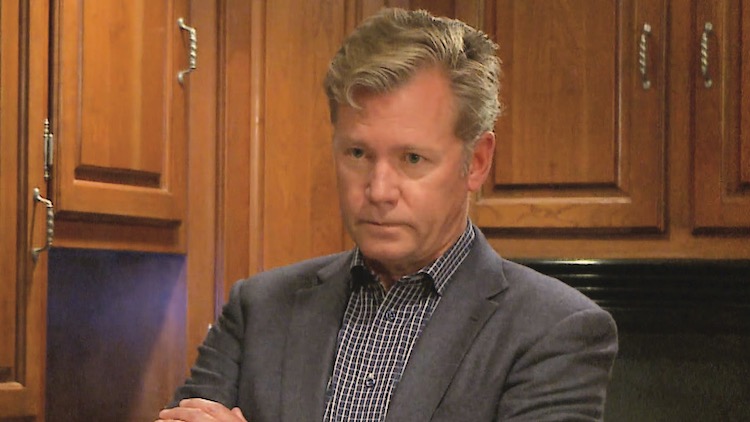NATPE: Execs Take Stock of ‘Weird Time’ for Syndication

Related: NATPE: Highlights From the 14th Annual Brandon Tartikoff Legacy Awards
Punctuating a NATPE that hummed along smoothly but also lacked a single one of the conference’s once-trademark splashy syndication launches, a panel featuring five top players assessing the marketplace capped the show’s first Station Summit track.
One point of general consensus: With studios offering less and less fare, stations are finding they must find new ways to control their own destinies. The Wednesday session, “Station Group State of the Union: Renewing Shows vs. Finding New Syndication Models—Which is the Stronger Play?” bore an epic title conveying the significant ground to be covered, asking a question that no one really can answer.
One basic feature of the landscape is that long-running syndicated hits like Dr. Phil, Family Feud and Ellen have crowded out space for newcomers. Many top-rated mainstays are renewed through the end of the decade, noted Greg Meidel, president of Twentieth Television. “It’s beachfront property and good luck trying to build on it,” he said. “It’s like trying to put up a new hotel between the Fontainebleau and the Eden Roc,” the adjacent Miami hotels where NATPE is held.
Meidel and his team are nevertheless bringing hopefuls like Page Six to this year’s market—with initial research and testing aiming to minimize risk compared with less-vetted shows requiring $5 million or more in broad marketing support at launch. But it is otherwise a lull that had a lot of NATPE attendees sizing up the state of things.
Related: Syndication Ratings: Access Sees Highs, Daytime Sees Preemptions
“It’s a weird time,” said Mort Marcus, co-president of Debmar-Mercury, the Lionsgate subsidiary whose stable includes The Wendy Williams Show and Family Feud. “ABC, CBS and NBC in New York, L.A. and Chicago don’t seem to need any shows. Yet there are plenty of ABC, CBS and NBC affiliates that need shows in the marketplace. So we do have a weird and complex setup right now.”
The smarter way to stay on top of broadcasting and cable industry. Sign up below
Meidel called it “gridlock,” adding the climate is unlike any he’s seen in his decades in syndication. And while he didn’t dispute the notion of stations feeling their oats with programming investments, he cautioned, “The cost of failure is still pretty substantial. I always admire that the station groups want to get into that. I know they’re very efficient and very cost-sensitive, but their success rate probably isn’t much better than ours.”
Marcus argued the business needs to evolve from one- or two-year guaranteed runs to 13-week cycles. In order to maximize revenue opportunities, both stations and syndicators have to think differently about the business.
Related: NATPE: CEO Bakish Sees 'Green Shoots' at Viacom
“The beauty of syndication is that you can actually own rights,” he pointed out, contrasting that circumstance with deal-making at Netflix or many cable networks, who want to own all rights. “You can control it, you can syndicate it around the world.”
And studio partnerships with stations—with recent examples like T.D. Jakes and Crime Watch Daily —can help both sides minimize risk.
Sean Compton, president of strategic programming and acquisitions for Tribune Media, said each group makes decisions based on their own economics. “We can all look at what a competitor is doing and say, ‘Why would they do that?’” he said. “But they know their own economics best.”
Deborah McDermott, longtime top exec at Media General who has segued into a consulting role after the company’s acquisition by Nexstar, said stations are looking to draw viewers however they can. “In daytime, a 1 is a 1 is a 1,” she said. “Would you rather pay a lot of money for that rating or a little money for that rating?”
Related: NATPE: Station, Studio Programmers Constantly Seeking New Ideas, Talent, Formats
She added, “As broadcasters, we have to be brave. We shouldn’t be afraid to take a show off that has a 0.1 or a 0.2 or a 1. Go ahead and take those shows off and put something else on.”
Vivi Zigler, president of digital, brand and audience development at Endemol Shine North America, said her company’s current portfolio of a whopping 657 shows across 27 countries has driven home the need to innovate and develop fresh programming. That principle applies to both station groups and syndicators in the current marketplace, she said.
Asked by moderator and B&C contributing editor Paige Albiniak to look down the road a bit, she expressed optimism.
“Necessity is the mother of invention, right? So I think you’re going to see some amazing partnerships,” she said. “I think you’re going to see innovation all over the place. There’s going to be a way of having good ideas bubble up more than ever.”
